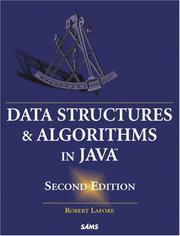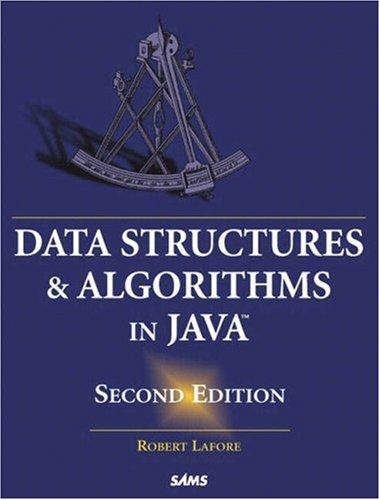Check nearby libraries
Buy this book

Data Structures and Algorithms in Java, Second Edition is designed to be easy to read and understand although the topic itself is complicated. Algorithms are the procedures that software programs use to manipulate data structures. Besides clear and simple example programs, the author includes a workshop as a small demonstration program executable on a Web browser. The programs demonstrate in graphical form what data structures look like and how they operate. In the second edition, the program is rewritten to improve operation and clarify the algorithms, the example programs are revised to work with the latest version of the Java JDK, and questions and exercises will be added at the end of each chapter making the book more useful to readers.
Check nearby libraries
Buy this book

Previews available in: English
| Edition | Availability |
|---|---|
|
1
Data Structures and Algorithms in Java
2017, Pearson Education, Limited
in English
0134847997 9780134847993
|
zzzz
|
|
2
Data Structures and Algorithms in Java
2005, Pearson Education
Electronic resource
in English
0768662605 9780768662603
|
zzzz
|
| 3 |
aaaa
|
Book Details
Table of Contents
Edition Notes
Includes bibliographical references (p. [735]-737) and index.
Rev. ed. of Sams teach yourself data structures and algorithms in 24 hours, 1999.
Classifications
The Physical Object
Edition Identifiers
Work Identifiers
Community Reviews (0)
History
- Created April 1, 2008
- 17 revisions
Wikipedia citation
×CloseCopy and paste this code into your Wikipedia page. Need help?
| September 13, 2025 | Edited by Drini | Add TOC from Tocky |
| September 13, 2025 | Edited by Drini | Add TOC from Tocky |
| December 8, 2024 | Edited by MARC Bot | import existing book |
| December 19, 2023 | Edited by ImportBot | import existing book |
| April 1, 2008 | Created by an anonymous user | Imported from Scriblio MARC record |










